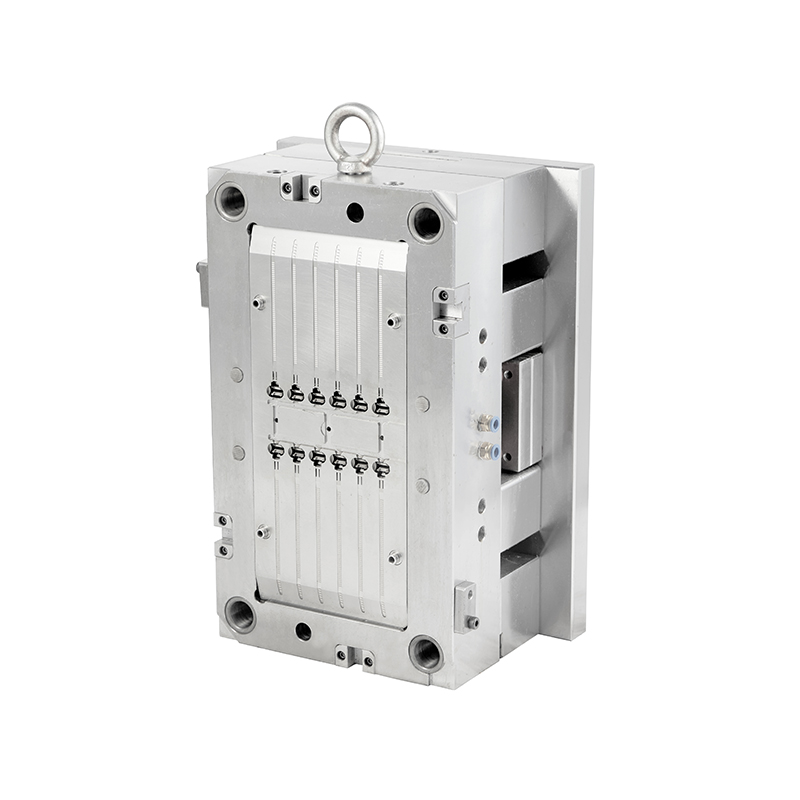 2025.05.02
2025.05.02
 News
News
A threaded head cable tie mold is a specialized tool used in injection molding processes to create cable ties with threaded heads. The head of the cable tie is the part that locks the tie in place, making it crucial for the security and stability of the tied cables. The threaded design enables the tie to securely lock around cables, offering a reliable grip and preventing them from slipping. The mold itself is designed to create a precise shape for the head and body of the tie, ensuring that each tie performs its function effectively.

The design of the threaded head cable tie mold includes cavities for both the main body and the threaded head of the cable tie. The material used for manufacturing these molds is typically high-strength steel, which can withstand the intense heat and pressure of the injection molding process. The mold is precision-engineered to ensure that each cable tie produced is of uniform size and quality.
The primary application of the threaded head cable tie mold is in the production of cable ties, which are widely used in various sectors to bundle and organize cables. These ties are essential for maintaining order and preventing tangling or damage to cables, which can otherwise lead to accidents or operational inefficiencies.
In the electronics industry, for instance, a threaded head cable tie mold is used to produce ties that help in organizing complex wiring systems in devices like computers, televisions, and other household electronics. These ties are crucial for keeping wires from becoming tangled, reducing the risk of short circuits and ensuring that the device operates safely and efficiently.
Similarly, in the automotive industry, cable ties produced using the threaded head cable tie mold are used to secure electrical wiring within the vehicle. These ties are exposed to conditions such as high temperatures, vibrations, and moisture, so the precise and strong threading produced by the mold ensures that the ties perform well in such environments.
The threaded head cable tie mold is indispensable in many industries beyond electronics and automotive. In construction, cable ties are used to secure wires during installation or to organize cables in electrical panels and junction boxes. By using a mold with a threaded head design, manufacturers are able to produce cable ties that offer extra strength and security, which is essential in construction settings where durability is a priority.
In telecommunications, a threaded head cable tie mold is used to create ties that help manage the vast network of cables used for communication purposes. Whether it's fiber optic cables, power lines, or network cables, the ability to securely fasten and manage these wires is crucial to ensure proper functioning and safety in telecommunications infrastructures.
The threaded head cable tie mold also plays a role in the manufacturing of consumer goods. Whether it's organizing electrical components in home appliances or bundling cables in gadgets and personal devices, the versatility of the cable tie is made possible by the precise engineering of the mold.
The threaded design produced by the threaded head cable tie mold enhances the durability and reliability of the ties. When a cable tie is fastened, the thread helps it maintain a firm hold on the cables, preventing slippage or loosening. This is particularly important in environments with vibrations or movement, such as in the automotive or industrial sectors, where even slight cable movement can lead to malfunction or failure.
Moreover, the quality of the material used in conjunction with the threaded head cable tie mold contributes to the tie's overall strength. Modern cable ties are often made from durable materials such as nylon, which is resistant to wear and tear, UV radiation, and temperature fluctuations. This combination of material strength and precise molding ensures that the final product is both reliable and long-lasting, making the threaded head cable tie mold a vital tool in producing cable ties that meet industry standards for safety and performance.